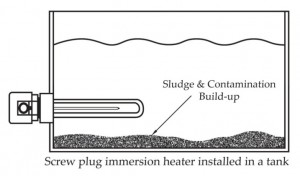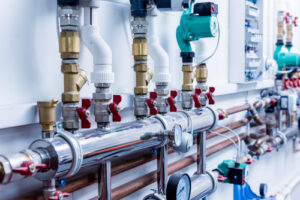Industrial Heating 101: All about Electric Heaters
Last updated on January 11th, 2024 at 10:00 pm
Whether it is chemical manufacturing in Denver Colorado, or refining deep in the heart of Texas, heating is an integral part of all industrial processes. When it comes to industrial heating, you can find a wide range of heaters. Their operation, design and technical aspects vary with the area of application.
Though thermal and solar heaters are probably the oldest methods of industrial heating, they are not as precise as electrical heating. This is because electrical heaters have digital and manual sensors which allow accurate control. Plus it is also easier to handle, install and maintain electrical heaters than hefty manual heaters. This is the reason that today almost every industry relies on electrical heaters for industrial heating.
To know more about electric heaters, keep reading:
Types for Electric Heaters for Direct Heating
Before moving on to the types of electric heaters, let’s have a look at two different methods of industrial heating:
 Direct Heating
Direct Heating
Direct heating, as the name implies, is a heating method in which the heater is directly immersed into the medium to be heated (it can be liquid or gas, depending on the industrial process). This is the most efficient method of heating, as there is no thermal lag or heat transfer losses. Plus, the method is also considered as more energy efficient and precise than indirect heating because the heat generated in this process by the electric heater is immediately absorbed in the fluid. However, mounting styles and temperature control vary with the type of electric heater.
Indirect Heating
Indirect heating is based on the basic principle of heat transfer from the hotter medium to the colder one. The method does not use electric heaters directly. The fluid to be heated is usually stored in a heating tank, and external heat is applied. The method usually uses heating pipes and boilers to heat the fluid.
Immersion Heaters
 Immersion electric heaters consist of a mechanical thermostat and digital sensors to heat the fluid to the desired temperature. These heaters are called immersion heaters because the heating element is directly immersed into the fluid to be heated. However, the design of immersion heaters depends on the wattage rating and area of application.
Immersion electric heaters consist of a mechanical thermostat and digital sensors to heat the fluid to the desired temperature. These heaters are called immersion heaters because the heating element is directly immersed into the fluid to be heated. However, the design of immersion heaters depends on the wattage rating and area of application.
- For small reservoirs, screw immersion heaters are used.
- For medium to large-sized tanks, flanged heaters are used.
- For tanks without openings, over-the-side immersion heaters are used.
Circulation Heaters
Circulation heaters are also electric industrial heaters used to heat viscous fluids. The heating element in circulation heaters keeps on regulating, which facilitates for heat transfers through dense fluids. They are preferred over immersion heaters in applications with space limitations, as these heaters can be directly installed in the heating tank.
Suction Heaters
The heavy fuel industry uses electric suction heaters to heat viscous oils and gases. These heaters consist of a flanged heating element immersed into the heating tank while the other end of the heater is open. The fluid pumped from the tank can be heated directly. These heaters eliminate the need of an additional storage tank. Now that you now the various types of electric heaters used in industrial heating, keep technical factors and heating requirements in mind to choose the right type of industrial electric heater.
